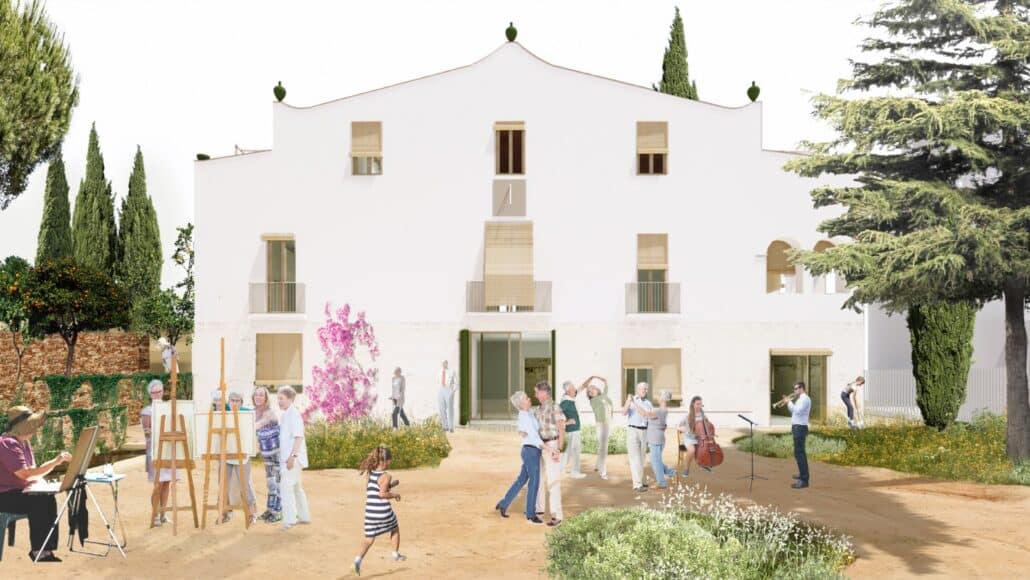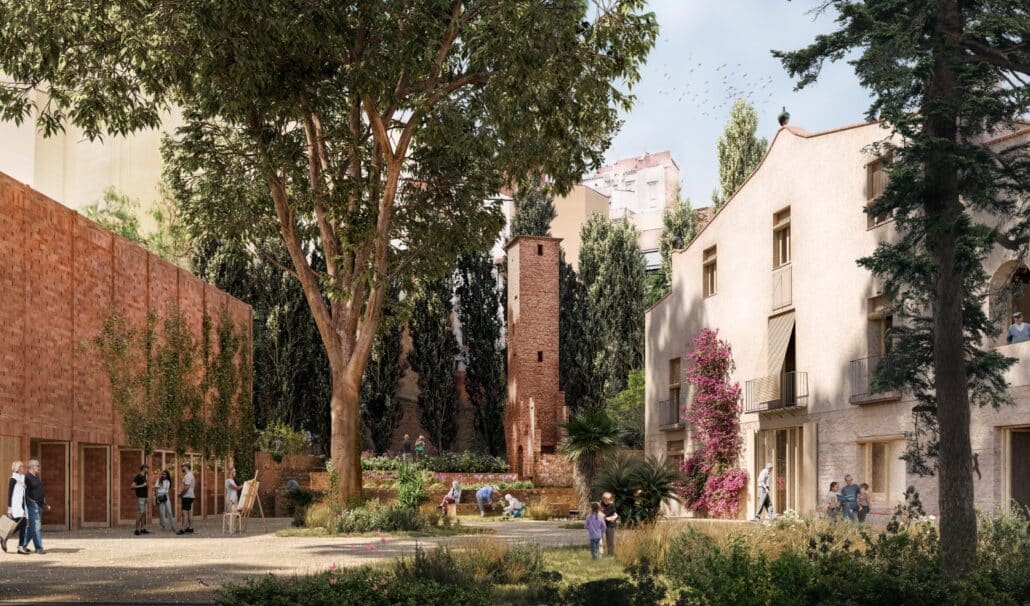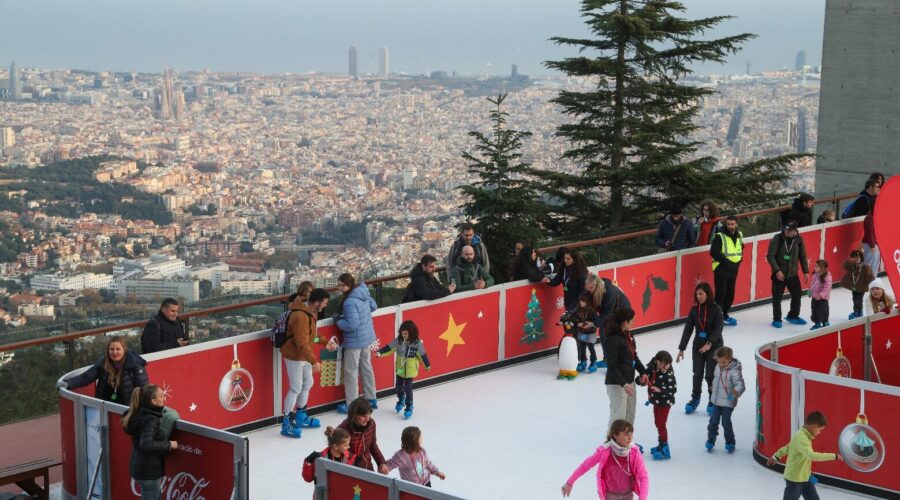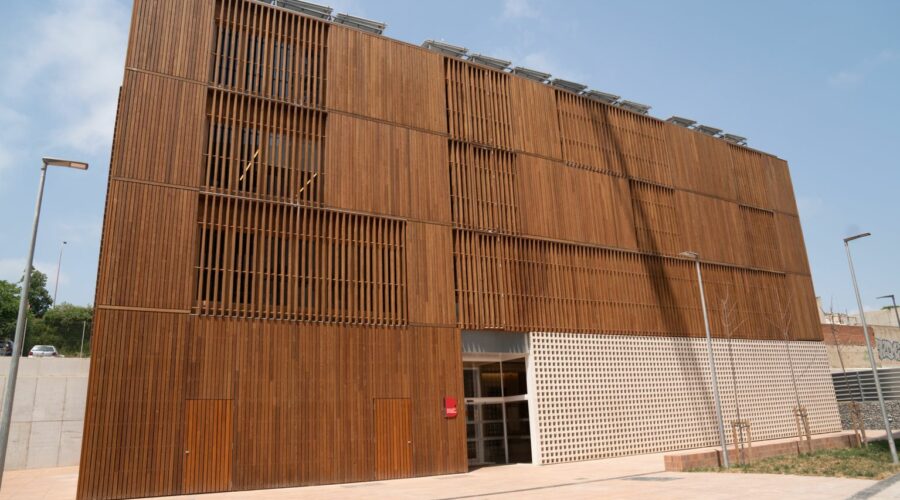The Barcelona City Council has announced an ambitious project to rehabilitate the historic Can Garcini farmhouse, located in the Guinardó district of Horta-Guinardó. With an investment of 4 million euros, this plan will not only preserve one of the most significant vestiges of the city’s agricultural past, but will also create a home for the elderly and open the estate’s gardens to the public, which will be renovated as a new meeting space for neighbors.
 A project with history and future
A project with history and future
The Garcini Tower, known for being one of the best preserved farmhouses in the territory, dates back to the 18th century and is a unique testimony of Barcelona’ s rural past. The main objective of this project is the rehabilitation of the farmhouse, respecting its original structure and preserving key heritage elements, such as the ceramic tiles and the hydraulic rajolas, which will be recycled and relocated to the second floor. Other emblematic elements such as the forn, the llar de foc and the well will also be restored. The intervention includes the construction of a multi-purpose annex building, which will allow the extension of the activities of the farmhouse, and the opening of the gardens surrounding the farmhouse, which will turn the space into a new green lung for the Guinardó neighborhood. This project has been long claimed by the neighbors, who have fought for the Garcini Tower to be preserved and transformed into a space for public use.
 Execution schedule
Execution schedule
The City Council plans to put the works out to tender in the coming months, with the expectation that work will begin in the summer of 2025 and extend until the first quarter of 2027. During this time, work will be carried out on both the farmhouse and the gardens, with the aim of providing a new 557 m² facility intended for the neighborhood’s elderly community.
The new Garcini Tower: a space for the community
The rehabilitation of the Can Garcini farmhouse not only seeks to preserve the historical memory of the building, but also to give it a new community function. The home for the elderly will have a variety of spaces that will include a computer room, a kitchen workshop, reading and game rooms, and an outdoor gallery for various activities. This space will not only be a meeting place for the elderly, but also a point of reference for the entire community. The annex building, which will be erected next to the farmhouse, will have two floors and two multipurpose rooms. The first floor will house a large double-height hall, which will function as an assembly hall and will be directly connected to the gardens. The upper floor, on the other hand, will offer a more intimate space for private activities.
The gardens: a new green lung for the Guinardó area
The rehabilitation also includes an intervention in the gardens surrounding the farmhouse, which will be transformed into an open and accessible public space. The project contemplates the creation of several areas with different characteristics and functions:
- The Plaza de l’Era will be the central space of the gardens, in connection with the Garcini passage.
- The floral workshop will be a complement to the activities of the casal, allowing seniors to enjoy gardening.
- A shade garden will become a new urban ecosystem that will promote biodiversity.
- The bassa and the fruit trees, located at the entrance from Xiprer street, will be an access point that will connect with the interpretation area of the gardens.
One of the highlights of the garden design is its approach from a gender perspective, avoiding the creation of dark areas or nooks and crannies that may generate insecurity. The paths will be fully accessible, and biodiversity will be promoted by planting species adapted to the local climate.
A historic space with a new purpose
Torre Garcini is much more than a historic farmhouse. Its value lies in its ability to tell the story of Barcelona’s agricultural past and its function as a social connector for the neighborhood. The gardens, which until recently were productive with the cultivation of flowers, will now be a meeting place for neighbors, preserving the spirit of a traditional farmhouse. The farmhouse, with its rectangular floor plan, tower and well, will be maintained as a testimony to the rural origins of the city. The intervention seeks to preserve as much as possible the heritage elements, ensuring that both the farmhouse and the gardens become a space where history and modernity coexist harmoniously.
A neighborhood achievement and a promising future
This project is the result of years of neighborhood mobilization, which began in 2010 when the farmhouse became uninhabited and was about to be demolished. In 2015, the demolition license was annulled, and in 2017 the process of forced expropriation began, which finally turned the Garcini Tower into a public domain asset. Today, the Garcini Tower is not only preserved, but is preparing for a new life as a community space where historical memory, sustainability and social inclusion go hand in hand.


 A project with history and future
A project with history and future Execution schedule
Execution schedule
